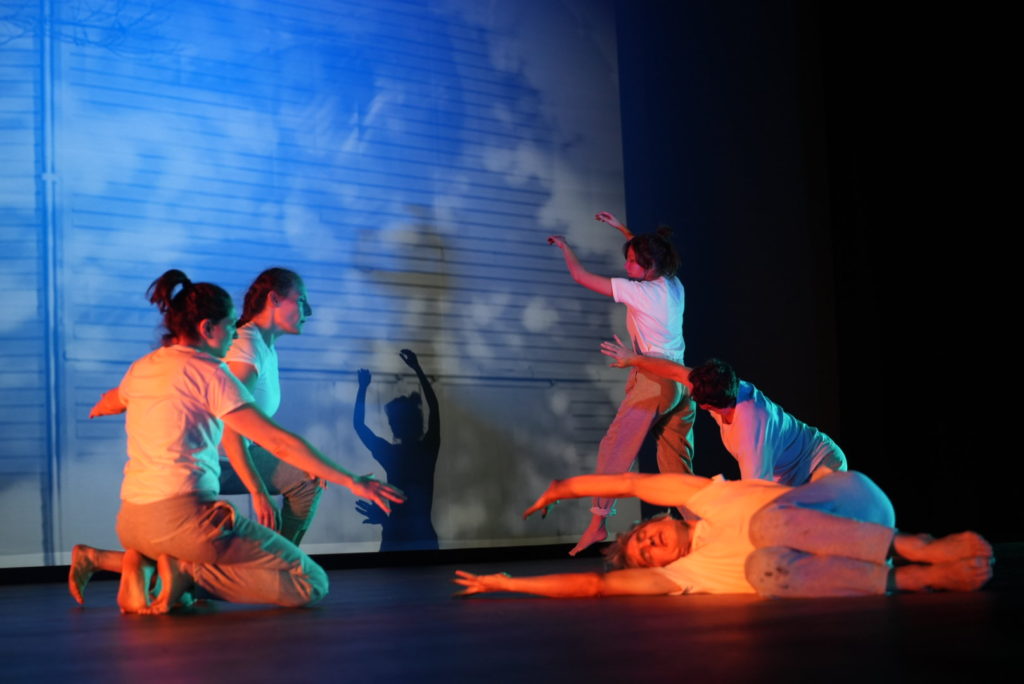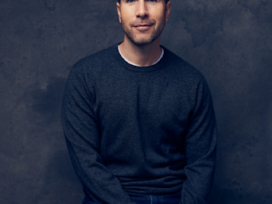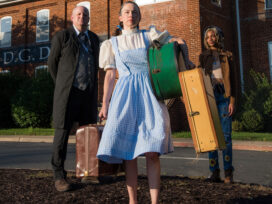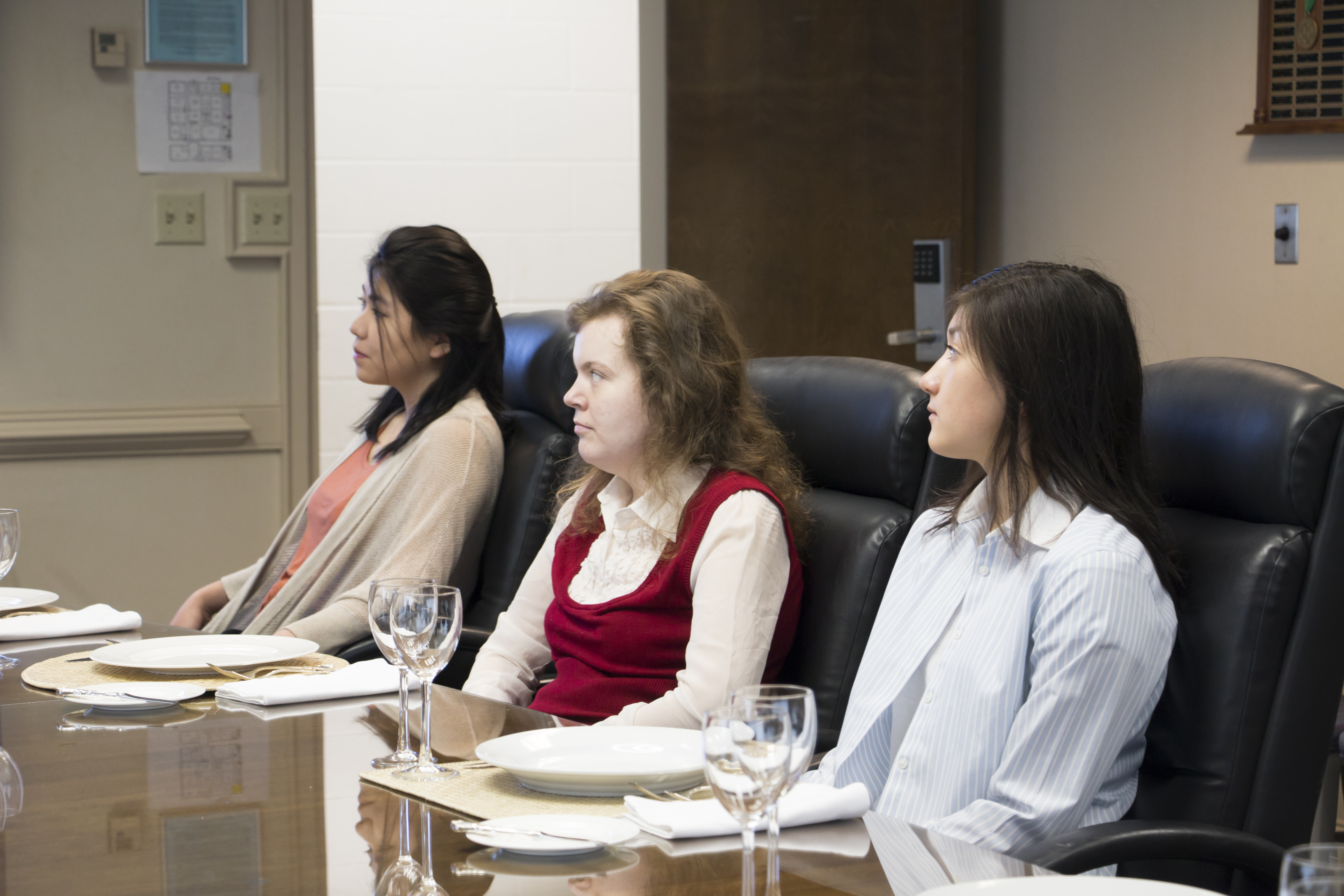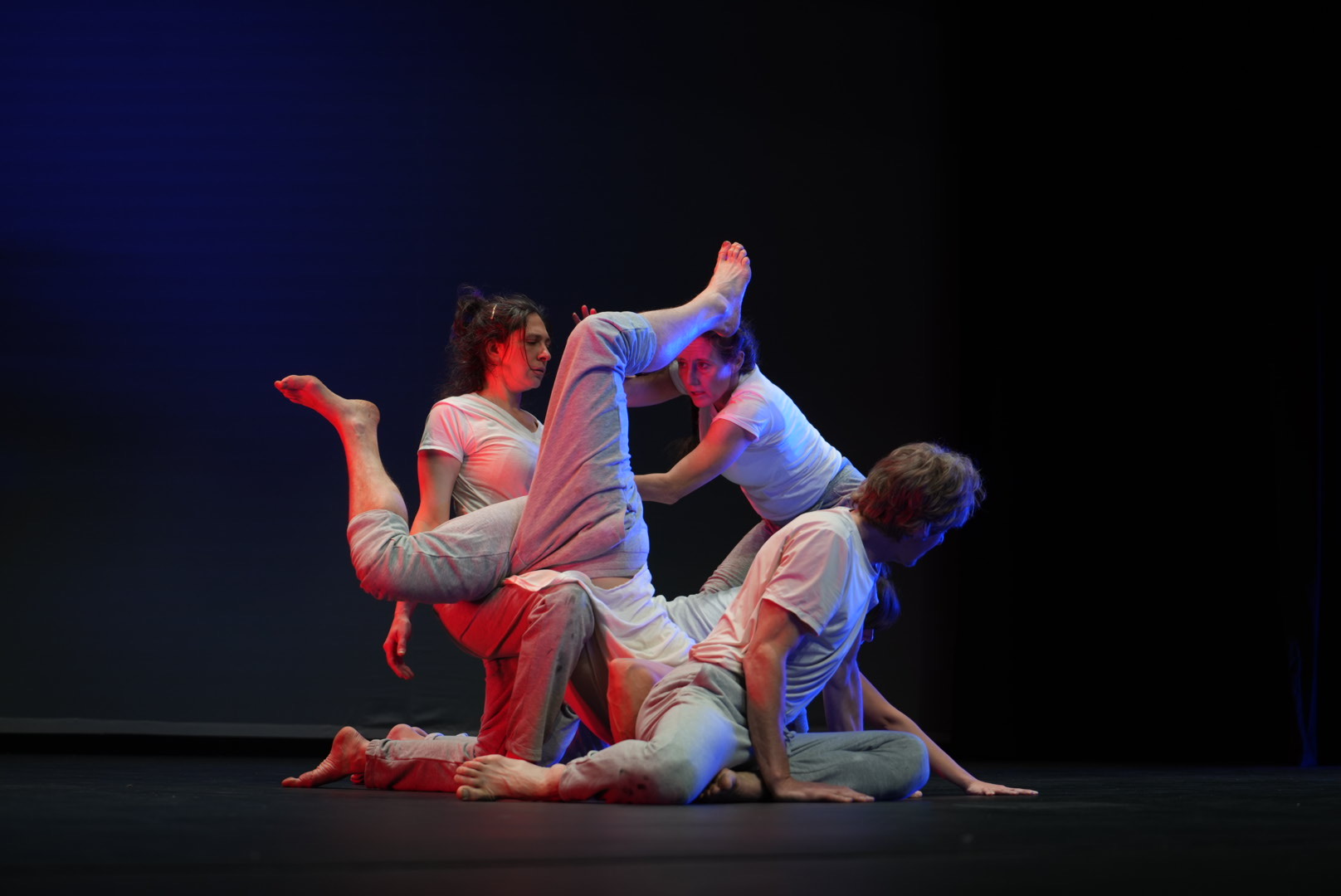
Flying in Place: A Balancing Act
Flying in Place: Liberating Voices From Virginia’s Prisons is a performance layered with delicate balancing acts. On Dec. 2, 3, and 4, it brought the writings of Virginia inmates onto the stage of PVCC’s theater. These writings are accompanied by shifting lights, dream-like music, and interpretive dance. In any performance, keeping all the parts working in balance can be a challenge, but the purpose of Flying in Place is to share the writing of inmates, so the question must be: do all parts of the performance serve to augment that writing, or do they draw away from it?
Throughout Flying in Place, the cast, dressed identically in white shirts and gray pants, act as both the readers and the dancers. Their slow and purposeful movements around the stage add a constant background noise of bare feet and hands sweeping across the ground. All the technology of the theater is put to use, with lights shifting and changing in a dance of their own, speakers playing mesmerizing music, and a projector turning the back wall of the stage into a screen for displays of text or video.
The piece features a wide variety of writings. It starts and ends with collections of haiku but is made largely of narratives, free writes, and other medium-length works. The tones of these writings vary. Some are fanciful and lighthearted, while others are moving and heavy. Some go without mentioning the writer’s incarceration even once, while others are deeply rooted in the circumstances that led there and in the pain of separation from children and other loved ones.
Others are somewhere in between, like a piece titled “Water,” which is a meandering free-write on the topic of water. It is playful and lighthearted as it describes the properties of water and how it arouses the writer’s curiosity and imagination up to the very end. Then it closes more somberly, saying, “I wonder how many gallons of water a person consumes in a day. I wonder how many gallons of water this prison consumes.”
The balancing of these different writings is important. The writings come from people who have experienced terrible things, and their descriptions of these events are paralyzingly visceral, but most people would find it very difficult to attend a performance made up solely of the inmates’ more painful stories. An overabundance of tragedy would strip many pieces of their individuality, reducing them to just another sad story.
Flying in Place balances the darkness with carefree, and abstract pieces. It strikes a good balance with these sorts of pieces, and the choreography contributes to that. Although the dancing, lighting, and music change between every part, they maintain the same dream-like feel throughout, and thanks to this point of consistency, the often drastic tonal shifts feel smooth and natural.
However, there is a place where the writing and the performance clash. Throughout Flying in Place, there are multiple “What I See Out My Window” essays from the inmates. All of these essays are presented in the same way. In the beginning, the projector displays the essay itself while the performers sit down and watch. The music pauses before the projection disappears and the music and dancing resume while the performers recite a fragmentary version of the written description shown earlier. The reason that this method of presentation falls short is that the original text is not projected long enough for most people to actually finish it, but long enough to see the original structure that is lost in the fragmented version. While each version is meaningful, the juxtaposition is jarring and draws away from both.
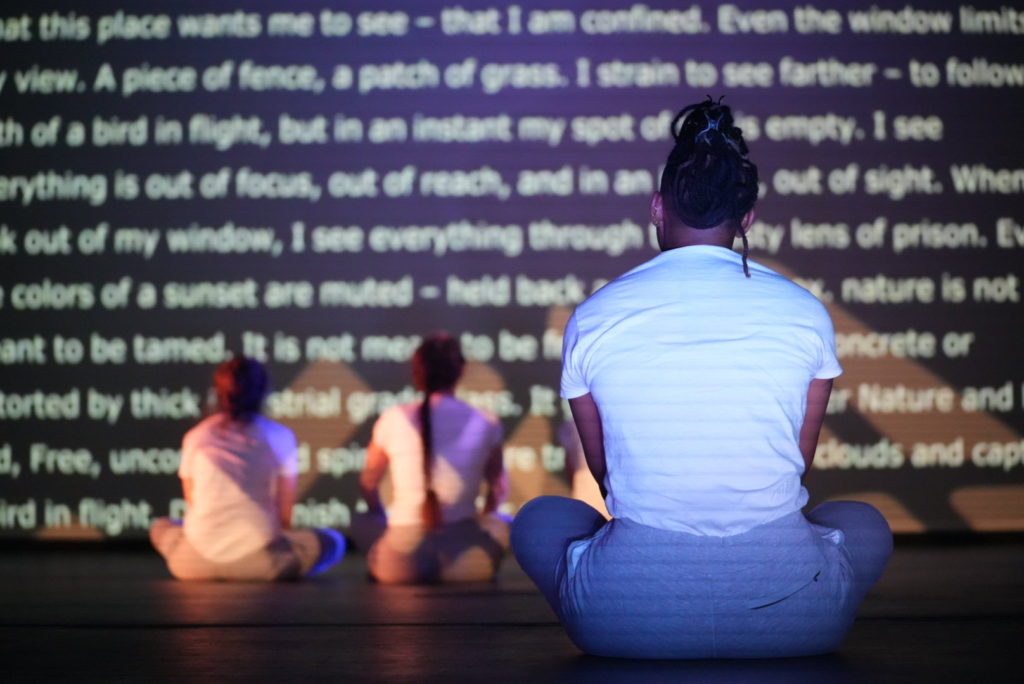
The final and greatest balance of Flying in Place is the delicate interspersing of concrete hope within abstract and heavy narratives. Just as “Water” ends with a sobering reminder of the writer’s incarceration, some of the darkest pieces end with the writer expressing their hope for the future and — shockingly — a feeling of gratitude that they went to prison and were able to receive an education from PVCC. One deeply depressing story ends, “I believe I went to prison for a purpose: to save my life from the heroin… I still struggle with my purpose in life and choice in career, but I am glad I went to prison.” It is the balance of these tiny glints of light against the darkness of some of the stories that make Flying in Place an unforgettable experience.
